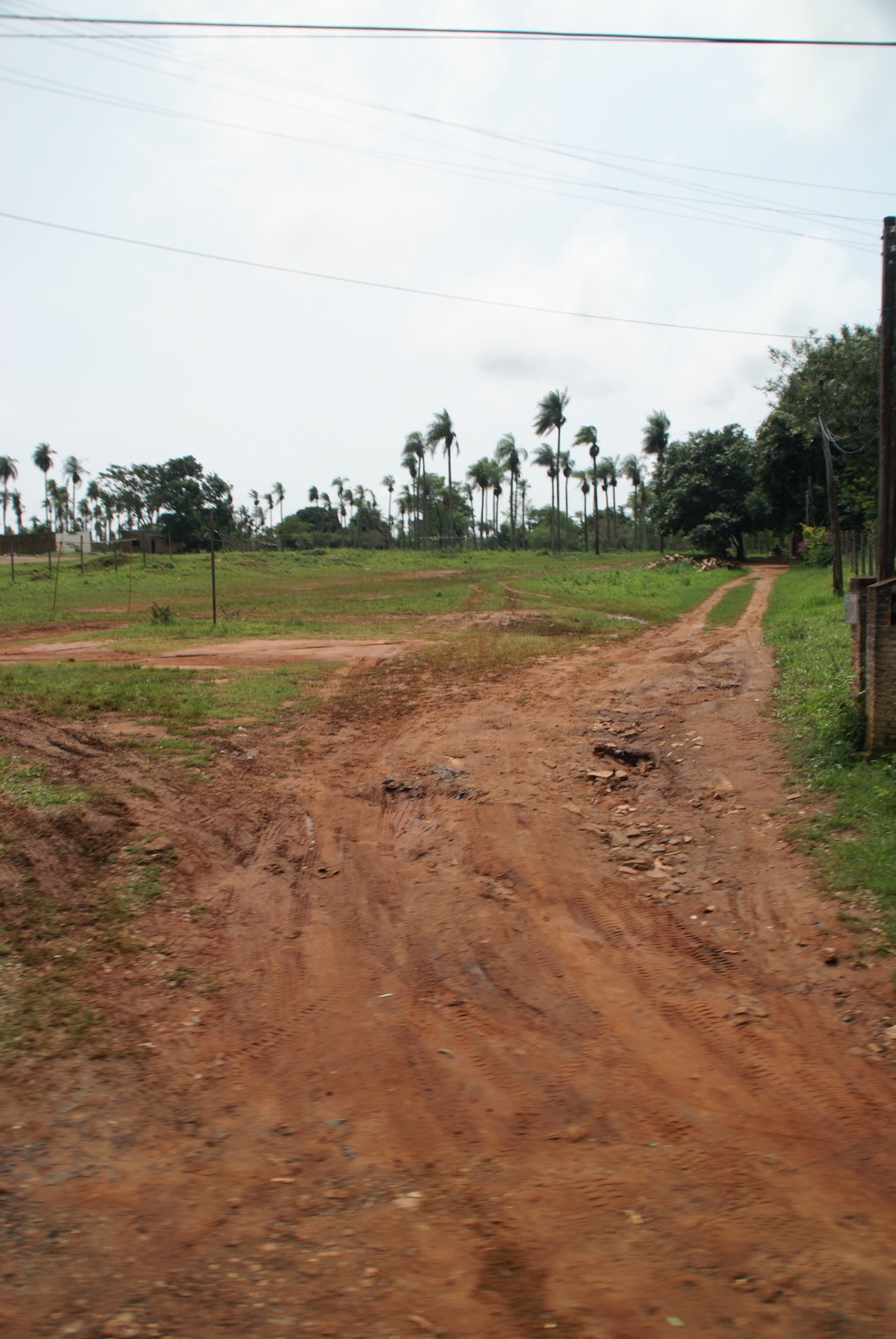 We crossed the border into Paraguay at Posadas/Encarnation. The border was on a large bridge over the River Paraná where border processes were at each end of the bridge. The process was very smooth and everyone was very helpful and 45 minutes later we were through and in Paraguay.
Paraguay is a bit of an enigma in South America and not many people know about it or visit it. It is one of only 2 landlocked South American countries and since independence has been ruled by a series of despotic dictators up until recently. It is also the only country where the local indigenous language Guarani is still an official language of the country and is still widely spoken. We were keen to learn more.
As we set off the air was very heavy and humid and the red earth was sticky and wet. It reminded me a bit of Africa.
Our first stop was at a lovely campsite in the grounds of a small nature reserve near to the Jesuit Missions. The Jesuits set up a number of missions in Paraguay, Argentina, Brazil and Bolivia. These missions preserved much of the way of life of the local population and protected the indigenous people from the excesses of the Spanish and Portuguese colonialists. Over time they became more and more powerful and were described as a colony within a colony. This antagonised the Spanish and the Portuguese who eventually threw the Jesuits out leading to the abandonment and destruction of the missions.
We first visited the mission at Trinidad which is perhaps the best preserved mission with ruins of not just the church but also the the homes of the Guarani people who lived there.
We crossed the border into Paraguay at Posadas/Encarnation. The border was on a large bridge over the River Paraná where border processes were at each end of the bridge. The process was very smooth and everyone was very helpful and 45 minutes later we were through and in Paraguay.
Paraguay is a bit of an enigma in South America and not many people know about it or visit it. It is one of only 2 landlocked South American countries and since independence has been ruled by a series of despotic dictators up until recently. It is also the only country where the local indigenous language Guarani is still an official language of the country and is still widely spoken. We were keen to learn more.
As we set off the air was very heavy and humid and the red earth was sticky and wet. It reminded me a bit of Africa.
Our first stop was at a lovely campsite in the grounds of a small nature reserve near to the Jesuit Missions. The Jesuits set up a number of missions in Paraguay, Argentina, Brazil and Bolivia. These missions preserved much of the way of life of the local population and protected the indigenous people from the excesses of the Spanish and Portuguese colonialists. Over time they became more and more powerful and were described as a colony within a colony. This antagonised the Spanish and the Portuguese who eventually threw the Jesuits out leading to the abandonment and destruction of the missions.
We first visited the mission at Trinidad which is perhaps the best preserved mission with ruins of not just the church but also the the homes of the Guarani people who lived there.
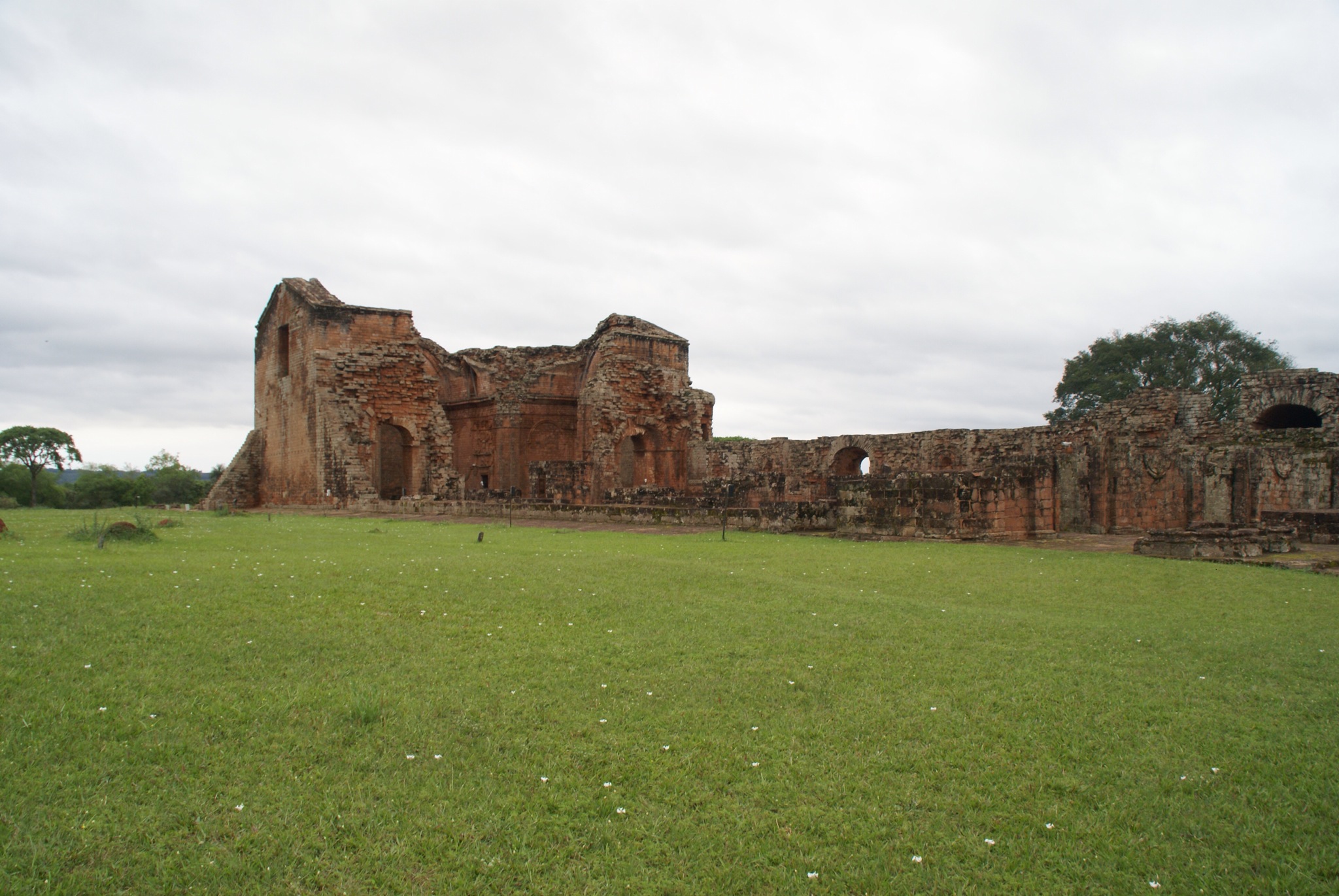
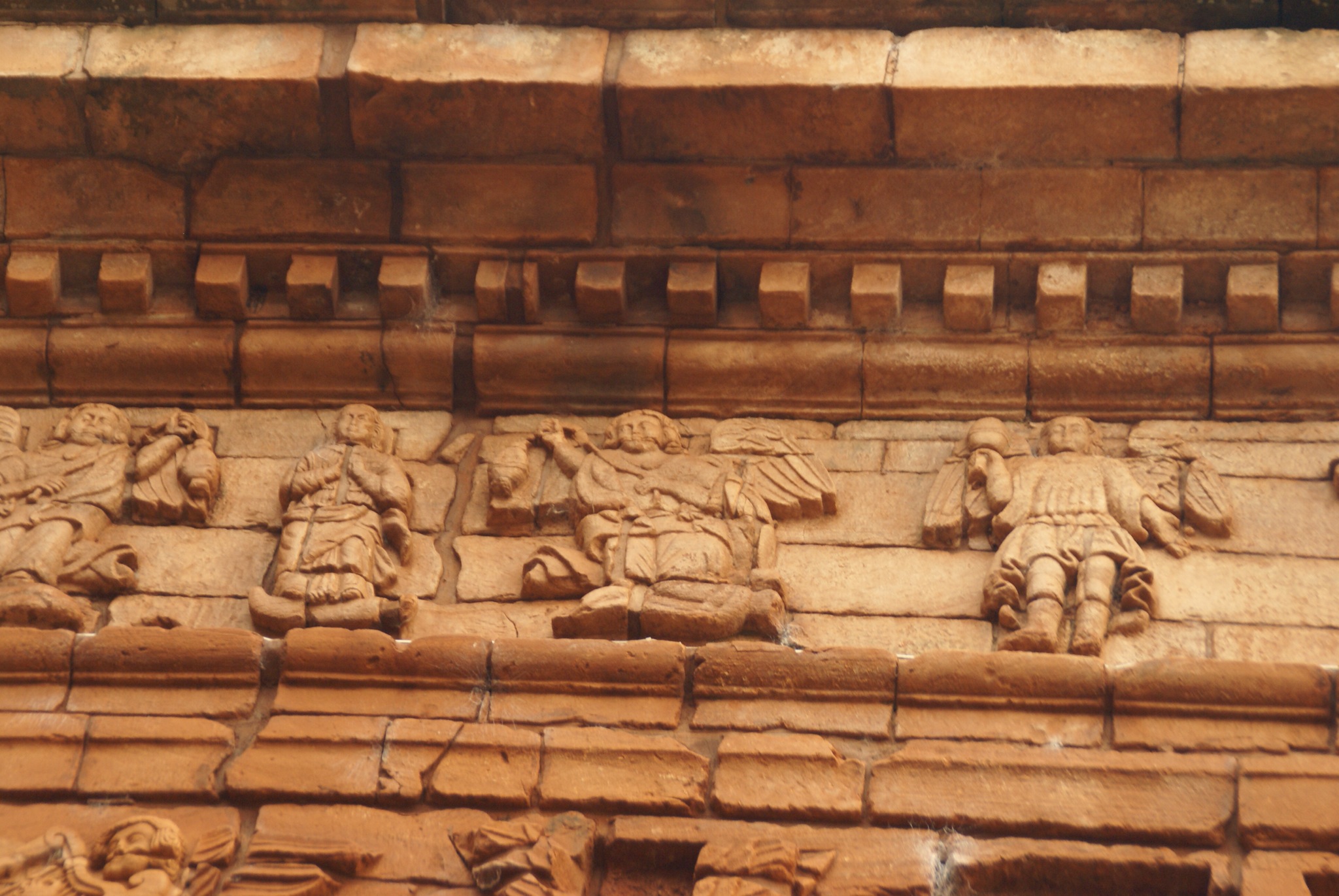
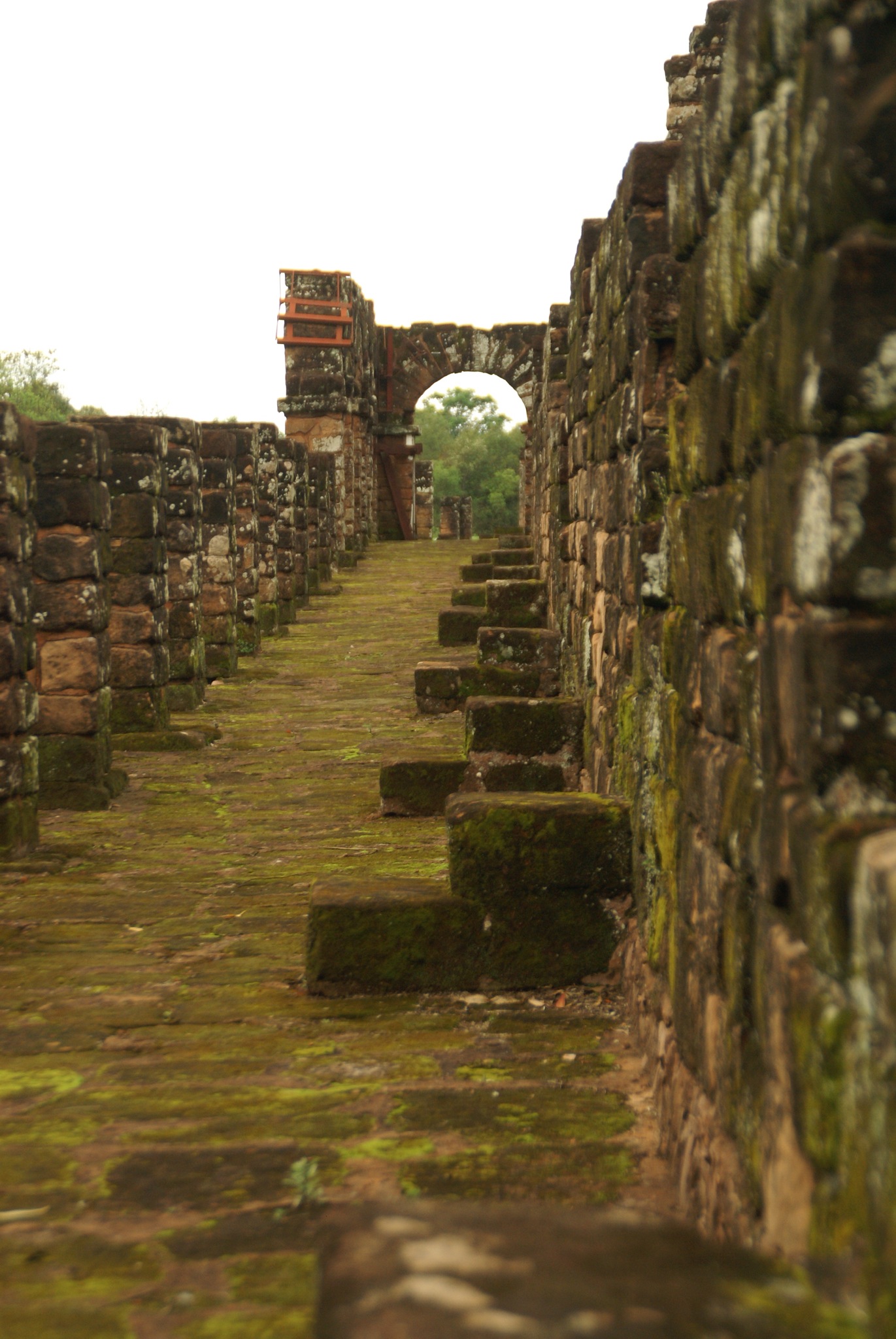
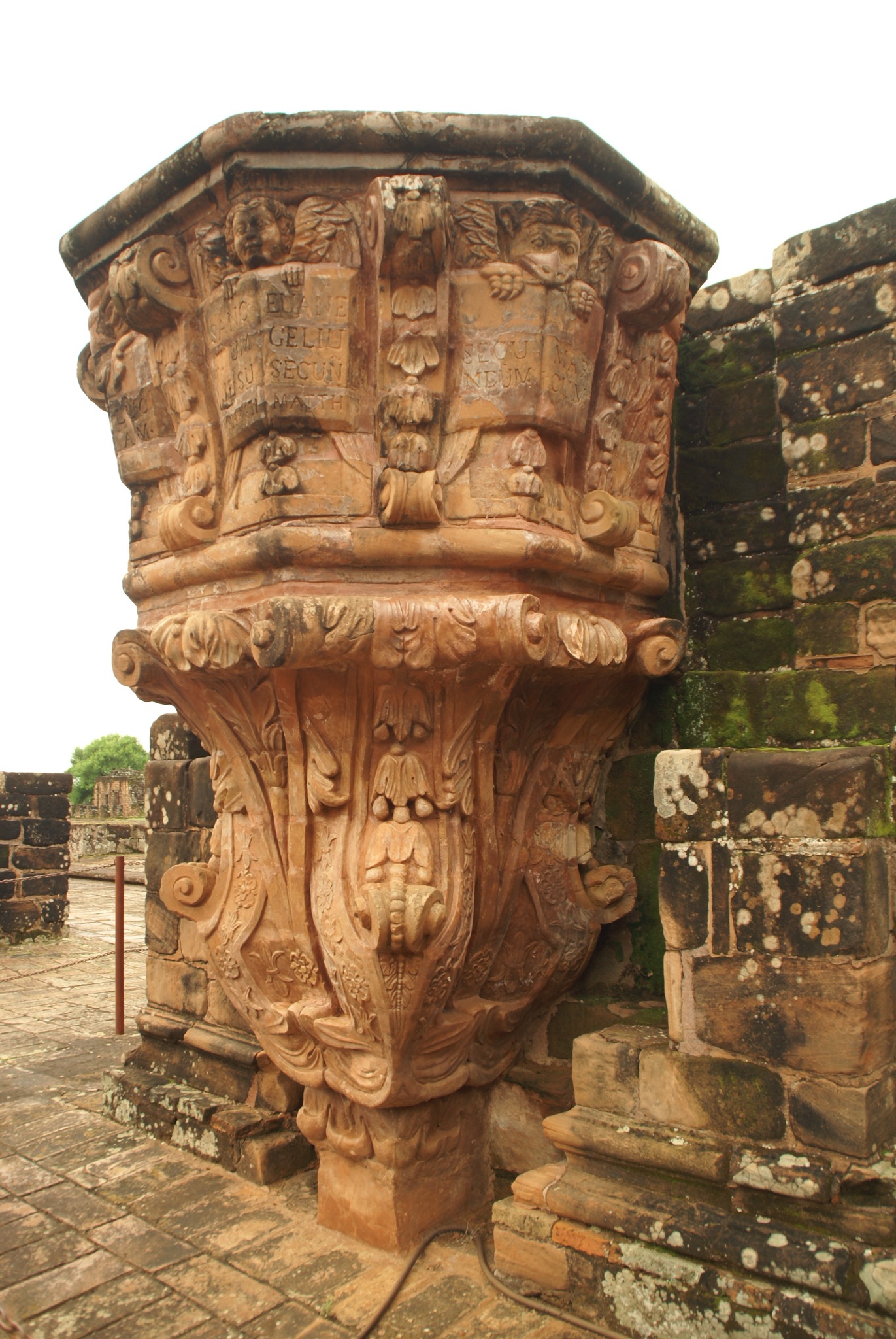 The second mission we visited was at Jesus. Here just the ruins of the fantastic church had been preserved.
The second mission we visited was at Jesus. Here just the ruins of the fantastic church had been preserved.
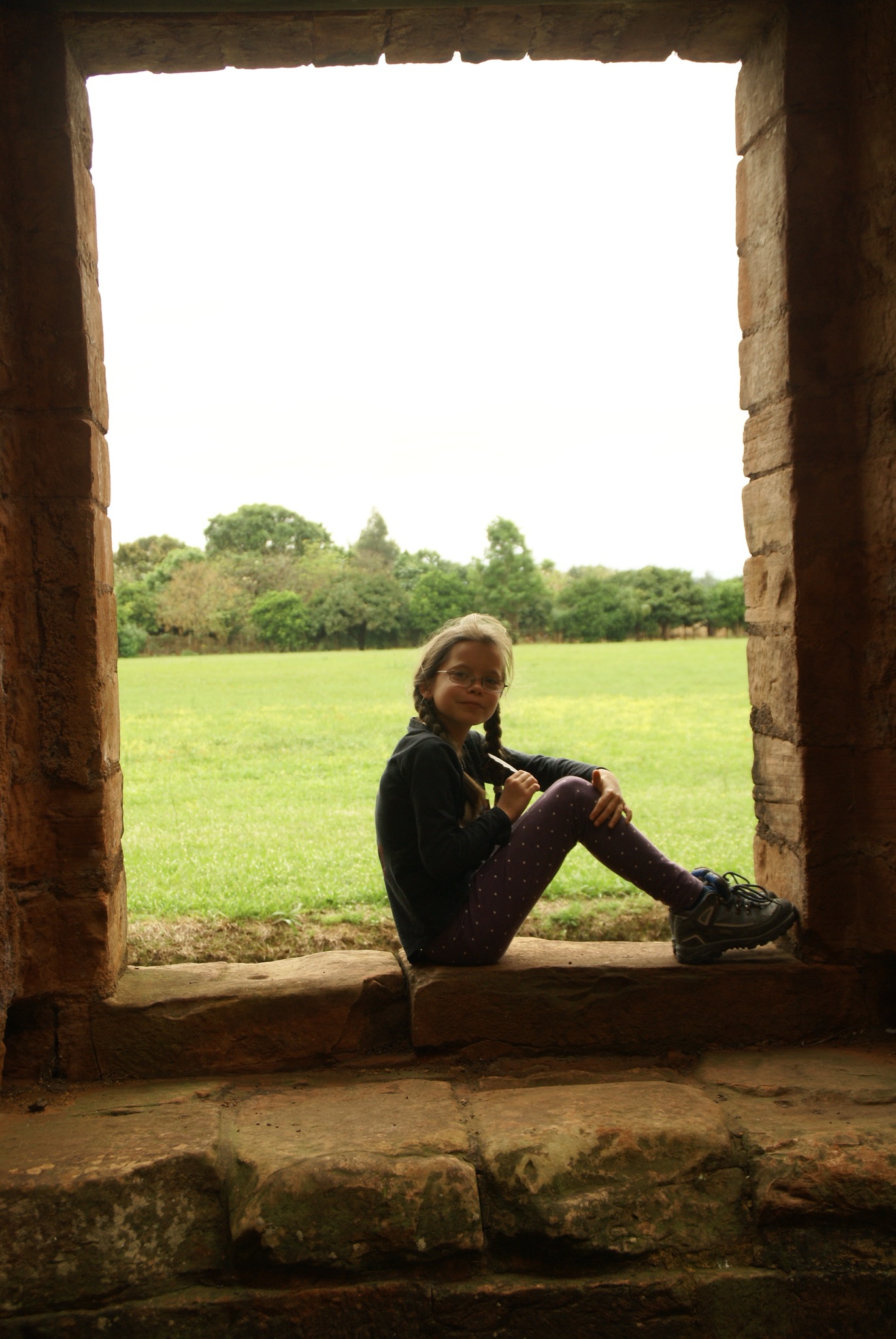
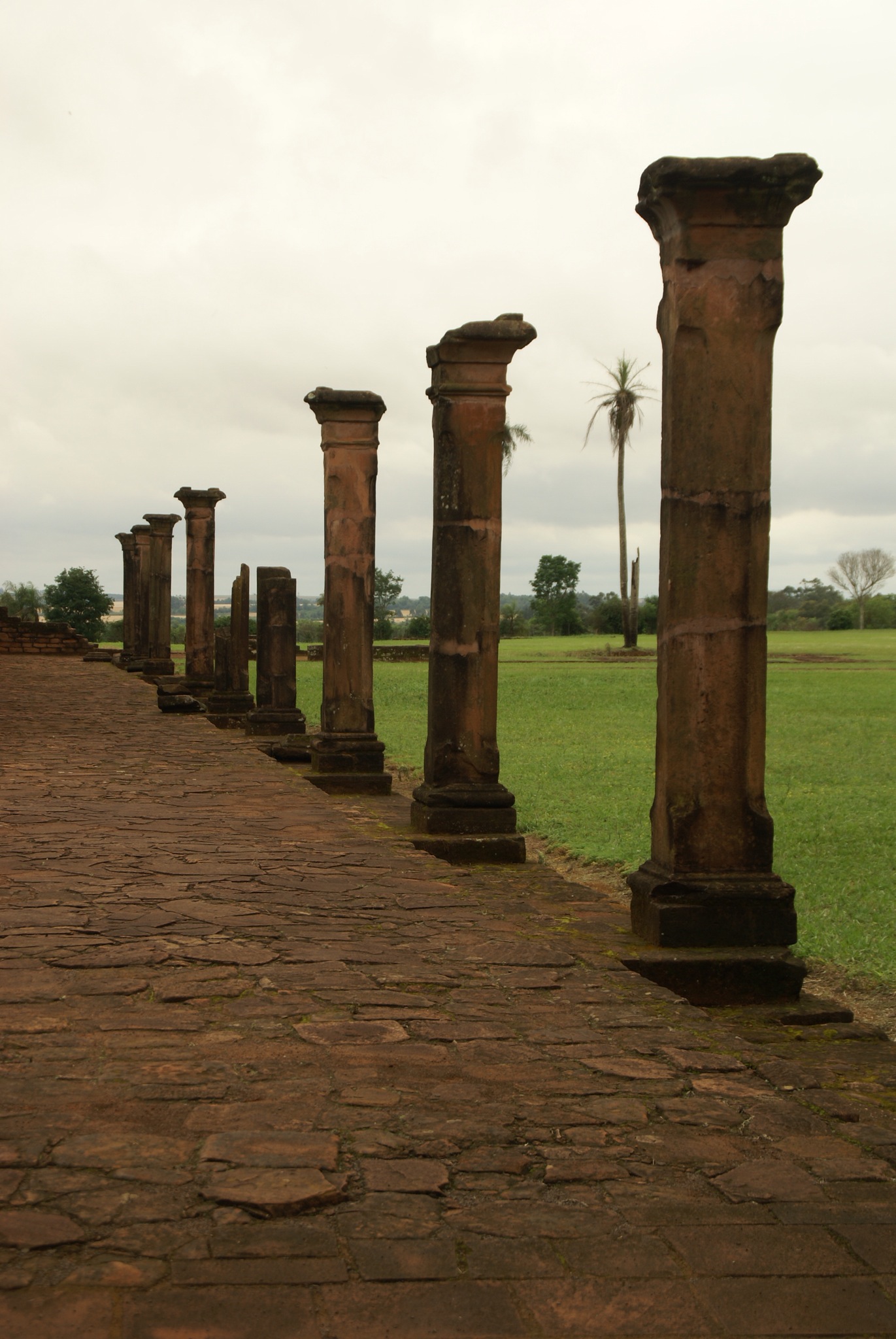
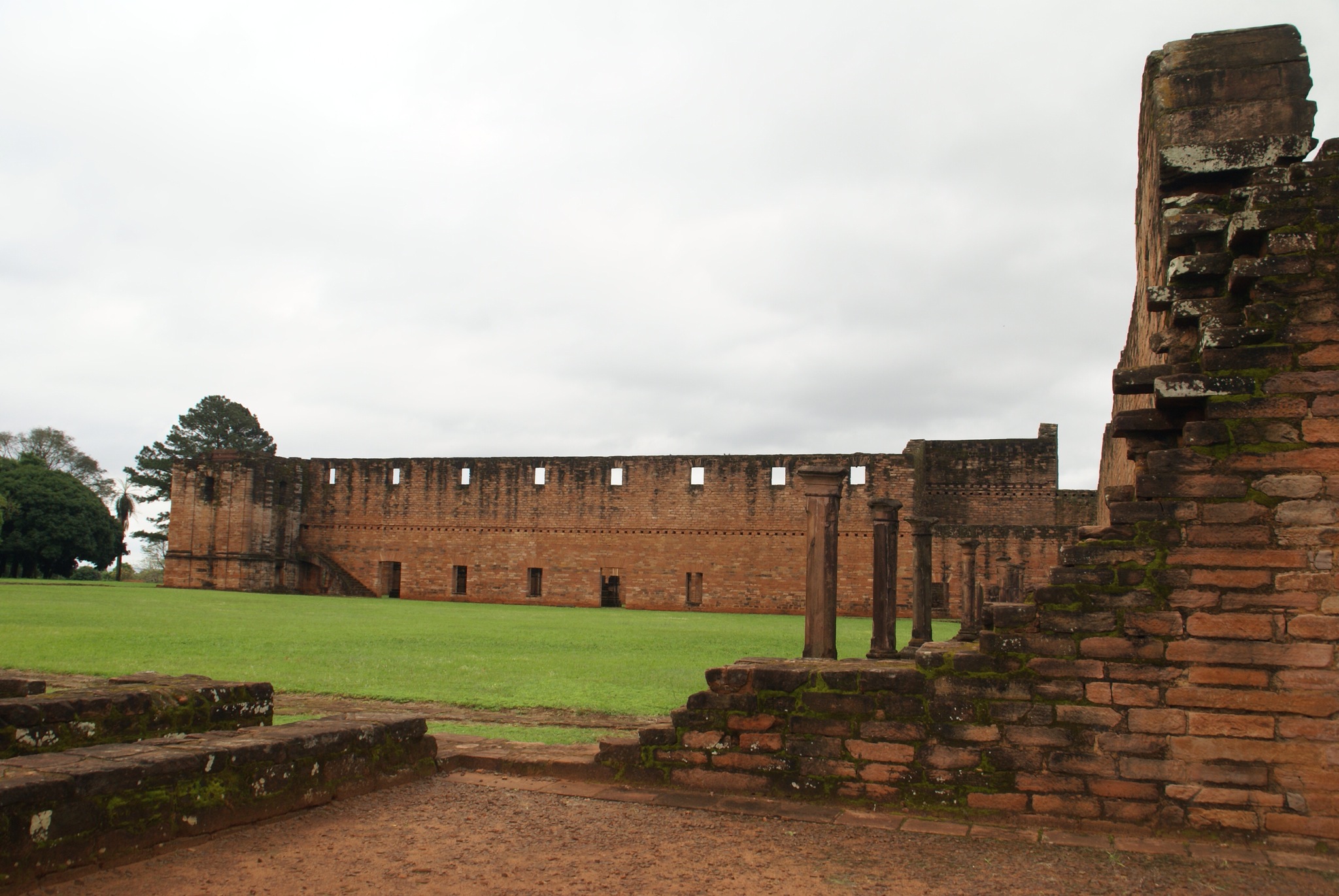
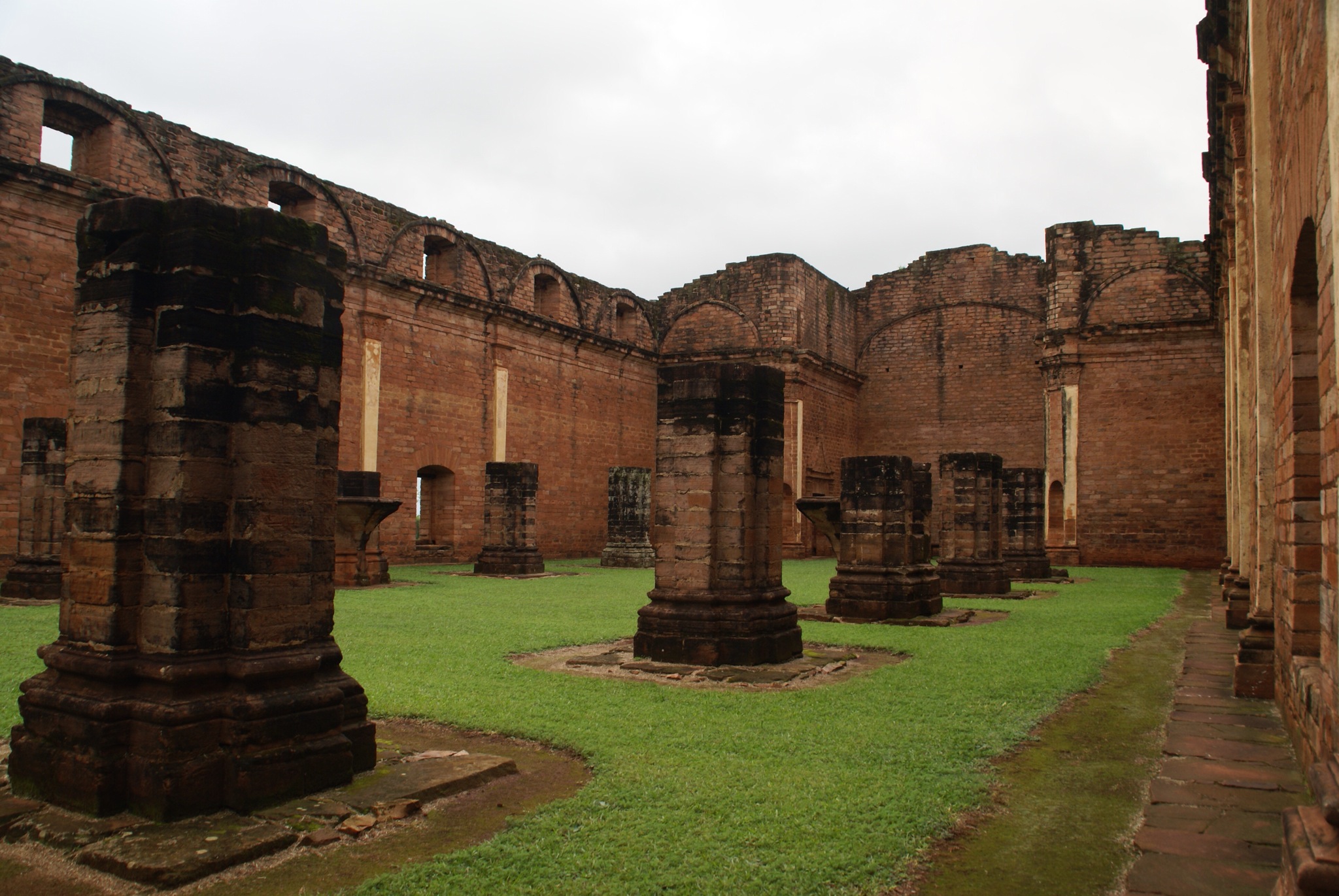 It was very interesting to learn about the work of the Jesuits and how different they were to much of the work of the Catholic Church at that time. As we had decent internet we also had to watch the movie The Mission which depicts part of the history and it was great to watch it sitting in the same scenic surroundings.
After the missions we headed to the East of Paraguay to Ciudad del Este to see the second largest dam in the world, the Itaipu dam. We arrived just in time to do the free tour so hopped on a bus to be told all the facts and figures and to see the actual dam. Unfortunately we could not do the tour going down into the dam as to do that everyone had to be over 14 years old. The dam is on the River Paraná which separates Paraguay and Brazil. Alisha was a bit concerned when I told her we had crossed over into Brazil and did not have our passports. The dam is certainly impressive and provides 90 per cent of the electrical needs for Paraguay and over 20 per cent of the total electric needs for Brazil.
It was very interesting to learn about the work of the Jesuits and how different they were to much of the work of the Catholic Church at that time. As we had decent internet we also had to watch the movie The Mission which depicts part of the history and it was great to watch it sitting in the same scenic surroundings.
After the missions we headed to the East of Paraguay to Ciudad del Este to see the second largest dam in the world, the Itaipu dam. We arrived just in time to do the free tour so hopped on a bus to be told all the facts and figures and to see the actual dam. Unfortunately we could not do the tour going down into the dam as to do that everyone had to be over 14 years old. The dam is on the River Paraná which separates Paraguay and Brazil. Alisha was a bit concerned when I told her we had crossed over into Brazil and did not have our passports. The dam is certainly impressive and provides 90 per cent of the electrical needs for Paraguay and over 20 per cent of the total electric needs for Brazil.
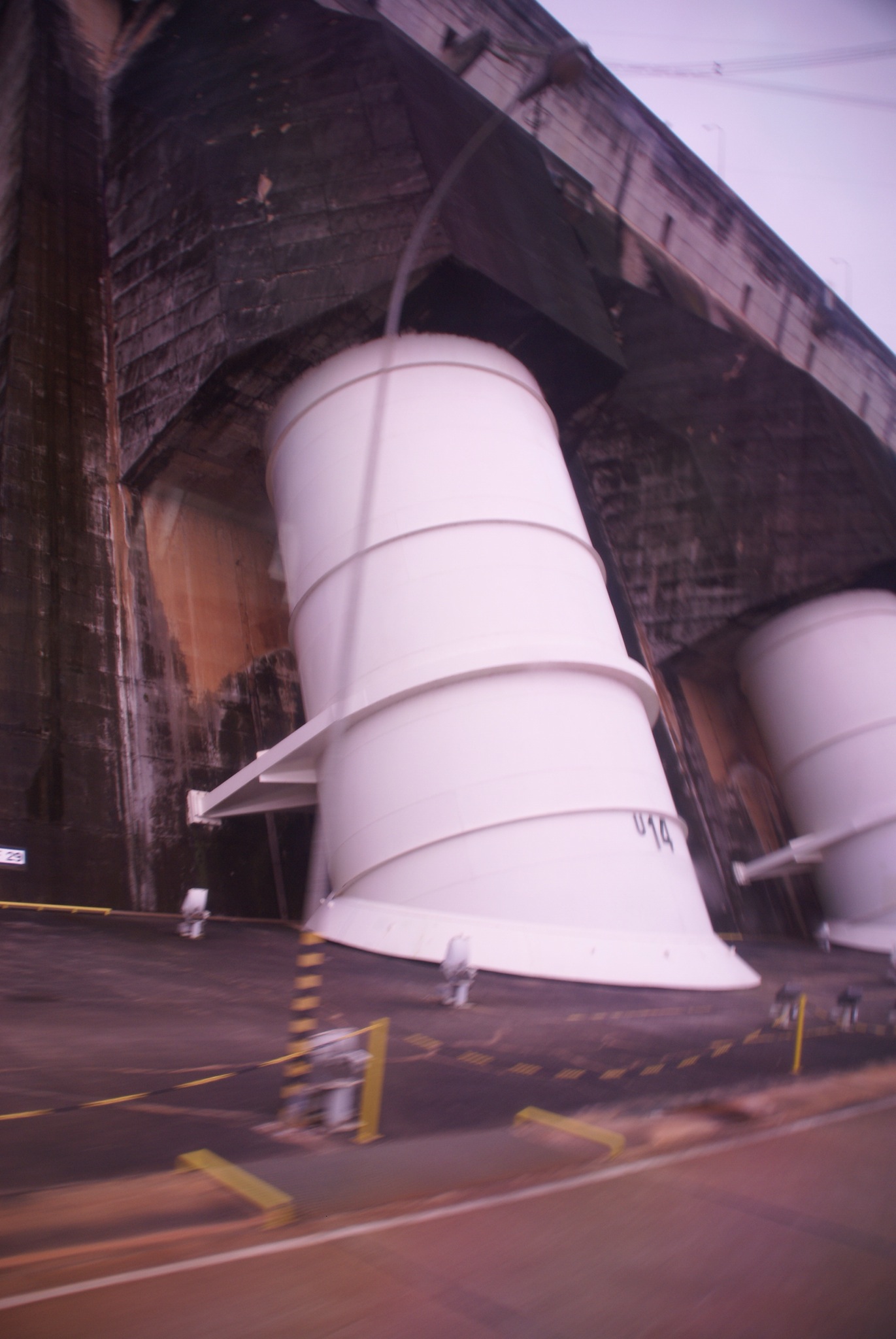
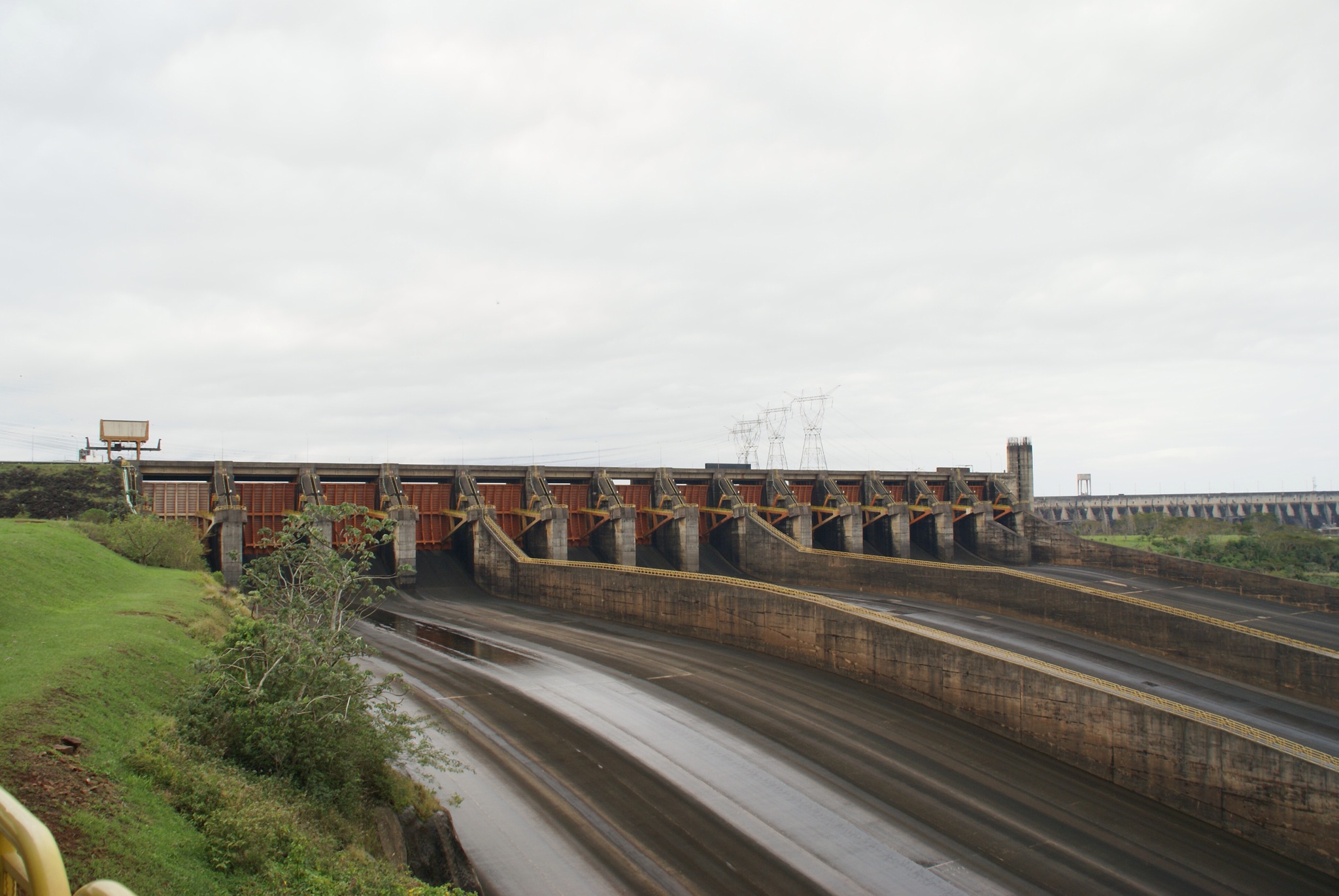
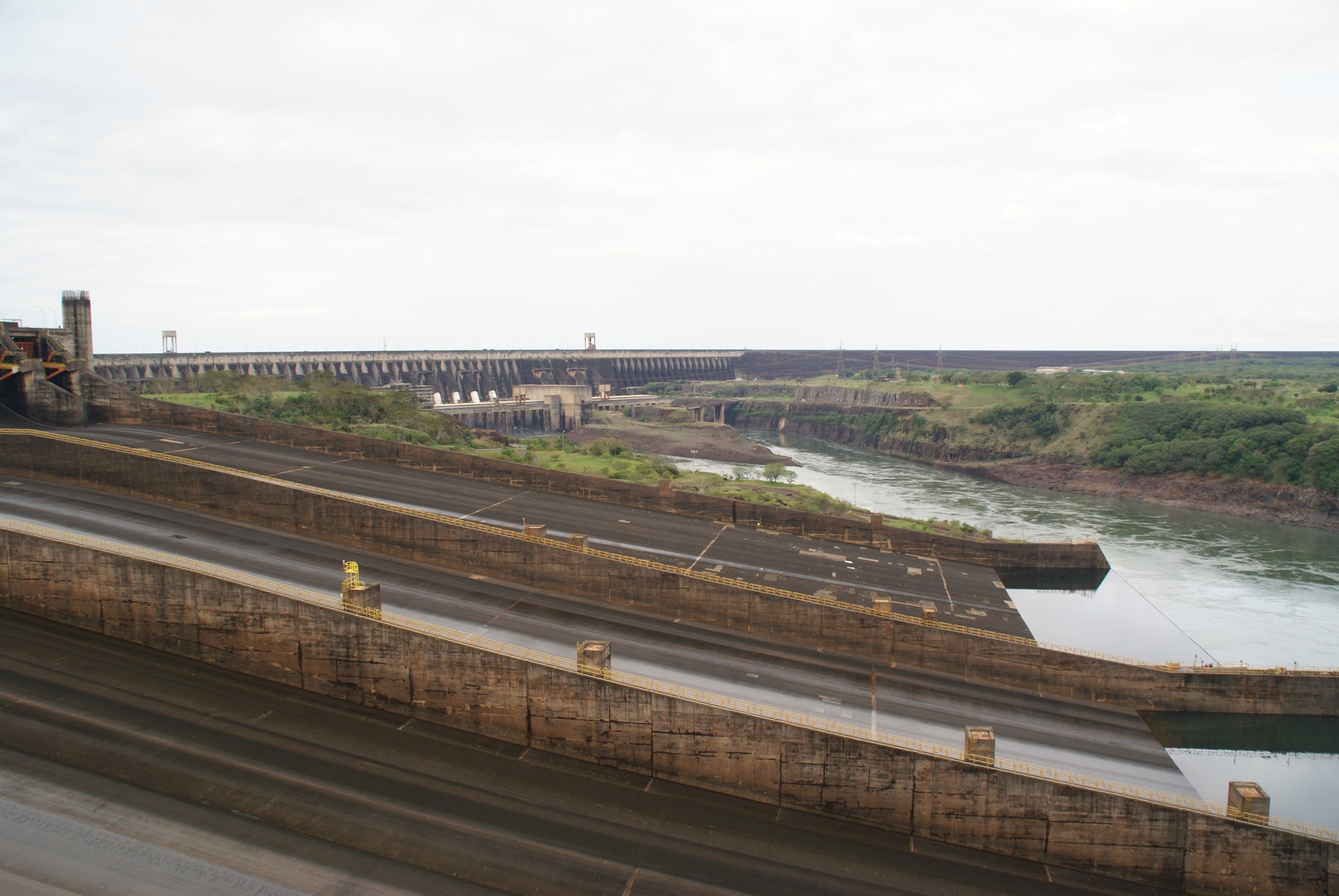
 Whilst the dam is not without its environmental controversy the power it produces comes from water and saves the need to burn countless barrels of oil every day to produce electricity. It's difficult to know which is better.
We were hoping to camp in one of the nature reserves that had been created nearby by the dam company so after the tour we enquired how we could get there. The very helpful staff explained that unfortunately the reserve was closed due to the rain but they suggested a campsite near some wonderful waterfalls only 20kms South.
We were very close to Iguazu waterfalls but we would not be visiting them just yet as we would be returning this way so instead we went to camp near the Saltas del Monday falls. As these falls are much smaller than Iguazu very few people visit them. The next morning we headed down to see them and they were very impressive with the river swollen with all the rain.
Whilst the dam is not without its environmental controversy the power it produces comes from water and saves the need to burn countless barrels of oil every day to produce electricity. It's difficult to know which is better.
We were hoping to camp in one of the nature reserves that had been created nearby by the dam company so after the tour we enquired how we could get there. The very helpful staff explained that unfortunately the reserve was closed due to the rain but they suggested a campsite near some wonderful waterfalls only 20kms South.
We were very close to Iguazu waterfalls but we would not be visiting them just yet as we would be returning this way so instead we went to camp near the Saltas del Monday falls. As these falls are much smaller than Iguazu very few people visit them. The next morning we headed down to see them and they were very impressive with the river swollen with all the rain.
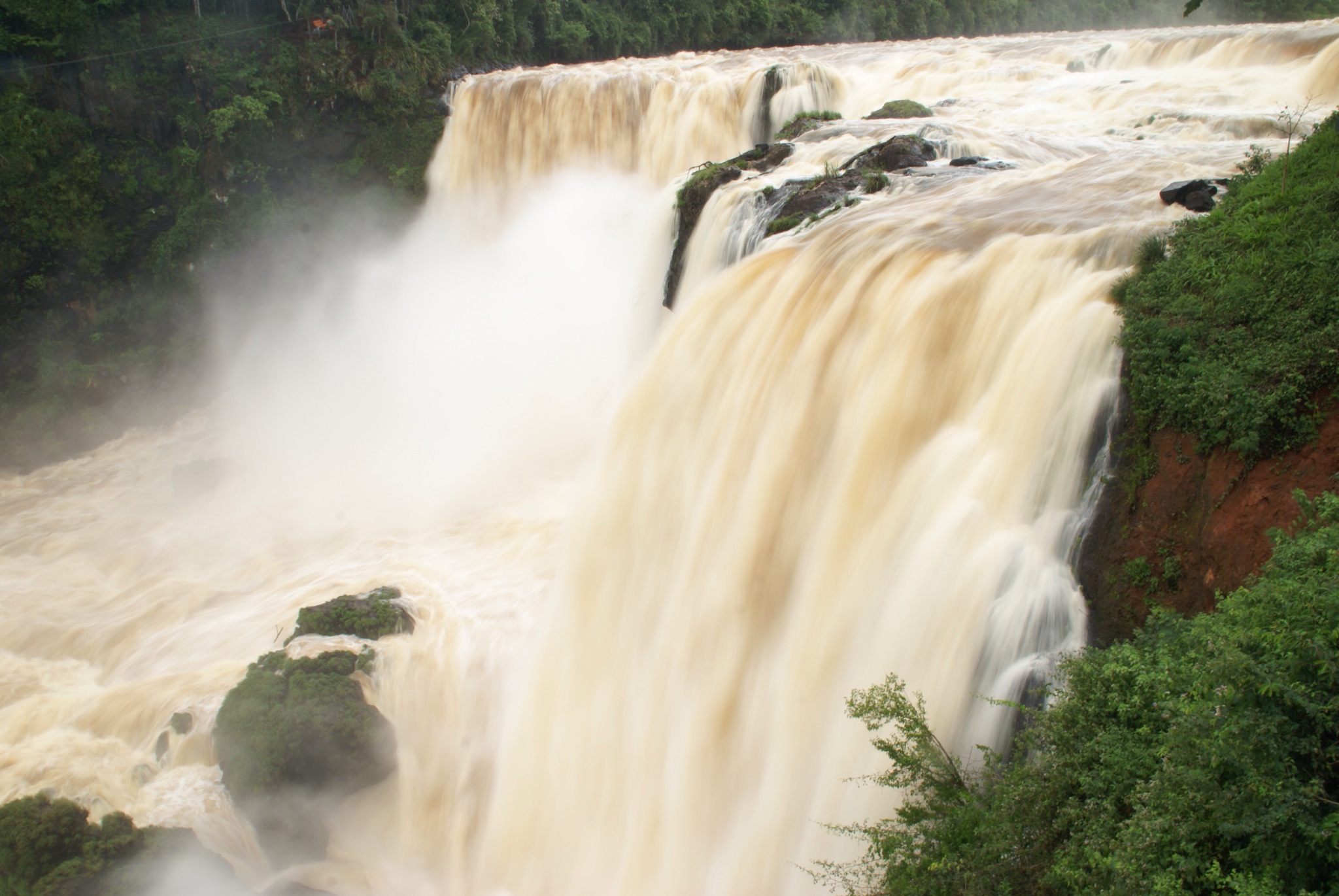
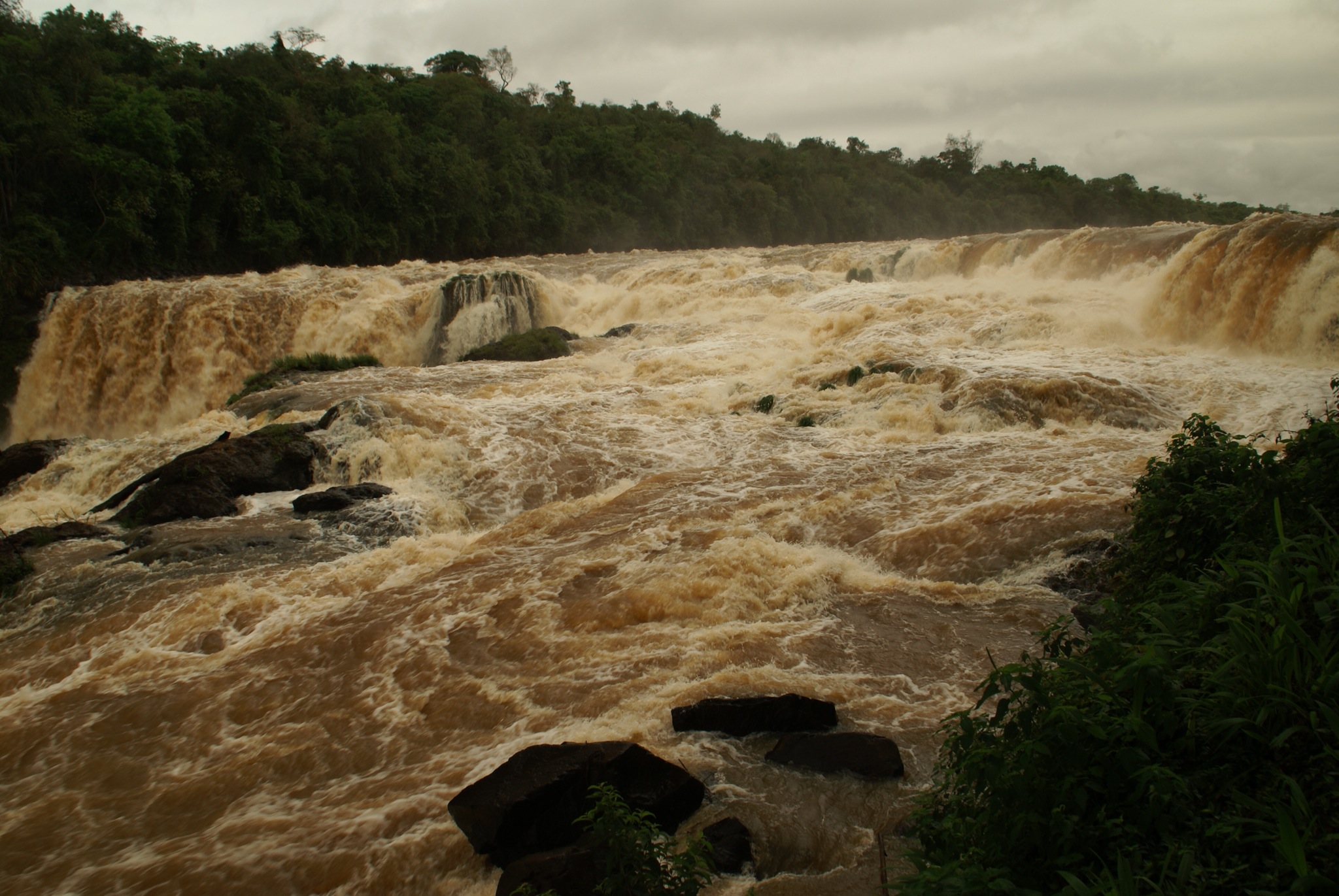 We set off back west towards Ascucion. On the way we thought we would visit the large Basilica at Caacupe. This is meant to be one of the biggest churches in Paraguay. Sometimes photos do not do a sight justice and sometimes, well, the sight is just not that impressive as proved to be the case this time.
We set off back west towards Ascucion. On the way we thought we would visit the large Basilica at Caacupe. This is meant to be one of the biggest churches in Paraguay. Sometimes photos do not do a sight justice and sometimes, well, the sight is just not that impressive as proved to be the case this time.
 We headed out of town looking for somewhere to camp. Along the road we saw a sign that said Ecocamping so followed the little track to a small farm where we were able to camp for the night. The farm was set in subtropical forest and the next morning we took a hike up the small hill on the farm. Leaving the farm behind we headed into San Bernadino which was full of people visiting from Ascuncion. We decided to do what they were all doing which was to pull into one of the restaurants and tuck into one of their Sunday buffets.
From there we headed into Ascuncion, the capital of Paraguay. In capital cities finding somewhere to stay is always difficult. We have stayed in car parks, hostels etc. well this time we would be staying in the grounds of the Botanical Gardens. As it was Sunday afternoon when we arrived we had to thread our way through the throngs of visitors enjoying the park to find the small camping area. This would be our base for our visit to Ascuncion.
We headed out of town looking for somewhere to camp. Along the road we saw a sign that said Ecocamping so followed the little track to a small farm where we were able to camp for the night. The farm was set in subtropical forest and the next morning we took a hike up the small hill on the farm. Leaving the farm behind we headed into San Bernadino which was full of people visiting from Ascuncion. We decided to do what they were all doing which was to pull into one of the restaurants and tuck into one of their Sunday buffets.
From there we headed into Ascuncion, the capital of Paraguay. In capital cities finding somewhere to stay is always difficult. We have stayed in car parks, hostels etc. well this time we would be staying in the grounds of the Botanical Gardens. As it was Sunday afternoon when we arrived we had to thread our way through the throngs of visitors enjoying the park to find the small camping area. This would be our base for our visit to Ascuncion. 
Really impressive!